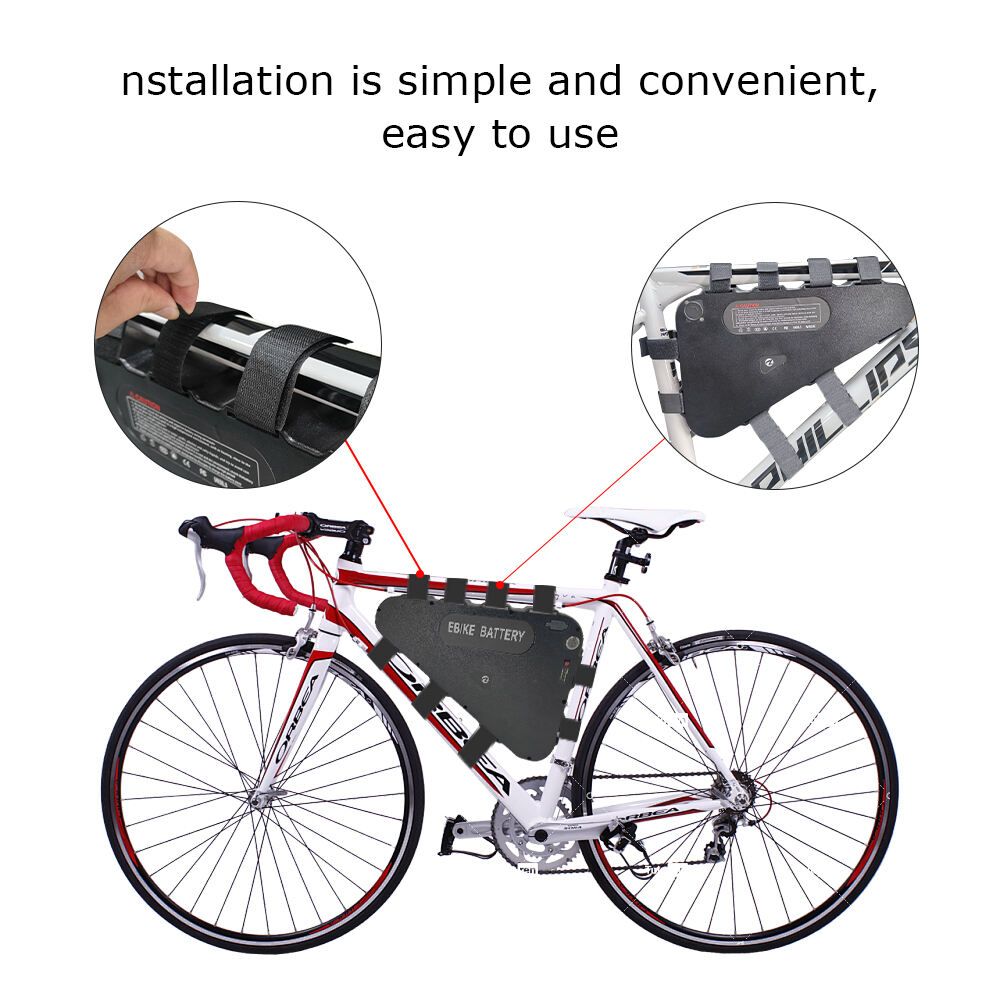Understanding the Power Revolution in Electric Bikes
The landscape of electric bike technology is experiencing a dramatic shift, with 72v electric bike battery systems leading the charge toward more powerful and efficient riding experiences. These high-voltage powerhouses are transforming how we think about e-bike performance, range, and capabilities. As we look ahead to 2025, the evolution of battery technology continues to push boundaries, offering riders unprecedented levels of power and reliability.
The 72v electric bike battery represents the pinnacle of current e-bike power systems, delivering exceptional performance that caters to both everyday commuters and adventure enthusiasts. This comprehensive guide will explore the latest innovations, top choices, and essential considerations for anyone looking to harness the full potential of high-voltage e-bike systems.
Advanced Technology Behind 72V Systems
Chemistry and Construction
Modern 72v electric bike battery packs typically utilize advanced lithium-ion chemistry, specifically designed for high-performance applications. These batteries incorporate the latest cell technology, featuring improved energy density and enhanced thermal management systems. The construction involves carefully arranged cells in series and parallel configurations, optimized for maximum power output while maintaining safety and reliability.
The sophisticated battery management systems (BMS) employed in these units monitor individual cell performance, temperature, and charging status. This level of oversight ensures optimal performance and longevity, making these batteries a sound investment for serious riders.
Performance Benefits
The higher voltage of 72v systems translates directly into superior performance metrics. Riders experience faster acceleration, improved hill-climbing ability, and sustained high-speed capability. The increased voltage also means lower current draw for the same power output, resulting in better efficiency and reduced heat generation during operation.
These systems typically deliver peak power outputs ranging from 2000W to 5000W, depending on the controller specifications and motor configuration. Such power levels were once reserved for lightweight motorcycles but are now available in pedal-assist formats.
Leading Battery Options for 2025
Premium Performance Picks
The market's top-tier options feature cutting-edge cell technology and sophisticated management systems. Premium 72v electric bike battery packs now incorporate advanced features like regenerative charging capability, smartphone connectivity, and real-time performance monitoring. These units typically offer capacities ranging from 20Ah to 40Ah, providing impressive range capabilities even under demanding conditions.
High-end manufacturers are introducing new models with integrated cooling systems, rapid-charging capabilities, and enhanced safety features. These premium options often come with extended warranties and comprehensive support packages, reflecting their professional-grade build quality.
Mid-Range Solutions
For riders seeking a balance between performance and value, several manufacturers offer robust mid-range 72v electric bike battery options. These units deliver reliable performance without the premium price tag of top-tier models. Typical specifications include 25Ah to 30Ah capacity ratings, standard BMS features, and durable construction suitable for daily use.
These batteries often utilize slightly older but well-proven cell technology, offering excellent reliability and reasonable performance at a more accessible price point. Many include basic monitoring features and standard safety protections, making them ideal for regular commuting and recreational riding.
Installation and Integration Considerations
Mounting Solutions
Proper installation of a 72v electric bike battery requires careful attention to mounting security and weight distribution. Modern battery packs offer various mounting configurations, including frame-integrated, rear rack, and downtube options. The choice of mounting location significantly impacts the bike's handling characteristics and overall riding experience.
Professional installation is often recommended, particularly for high-capacity units, to ensure proper securing, wiring, and weather protection. Many manufacturers now offer custom mounting solutions designed specifically for their battery systems, simplifying the integration process.
Compatibility Factors
When selecting a 72v electric bike battery, compatibility with existing components is crucial. The controller, motor, and display system must all be rated for 72v operation. Additionally, connector types, communication protocols, and physical dimensions need careful consideration during the selection process.
Modern systems often feature plug-and-play connectivity, but it's essential to verify compatibility with specific bike models and components before making a purchase. Some manufacturers offer complete upgrade kits that ensure perfect compatibility across all components.
Maintenance and Longevity
Optimal Care Practices
Maintaining a 72v electric bike battery requires attention to charging habits, storage conditions, and regular inspection routines. Proper charging protocols, including avoiding frequent deep discharges and maintaining appropriate charge levels during storage, significantly impact battery lifespan.
Regular inspection of connections, mounting hardware, and battery casing helps identify potential issues before they become serious problems. Many modern batteries include self-diagnostic capabilities that alert users to maintenance needs or potential problems.
Long-term Performance
With proper care, a quality 72v electric bike battery can maintain excellent performance for several years of regular use. Modern chemistry and management systems help prevent premature capacity loss, while robust construction ensures durability under various riding conditions.
Understanding capacity degradation patterns and implementing appropriate usage strategies helps maximize battery lifespan. Many users report maintaining 80% or more of original capacity after several years of regular use when following recommended care guidelines.
Frequently Asked Questions
What range can I expect from a 72v electric bike battery?
Range varies significantly based on riding conditions, battery capacity, and power usage patterns. Typically, a quality 72v system with 30Ah capacity can provide 40-80 miles of range under normal riding conditions. Factors like terrain, rider weight, and assist level greatly influence actual range performance.
How long does charging typically take?
Standard charging times for a 72v electric bike battery range from 4-8 hours using supplied chargers. Fast-charging options can reduce this to 2-3 hours, though regular use of fast charging may impact long-term battery life. It's recommended to use standard charging speeds for routine charging.
What safety features should I look for?
Essential safety features include overcurrent protection, temperature monitoring, cell balancing, and short-circuit protection within the BMS. Look for batteries with UL certification or equivalent safety standards, and ensure the case is water-resistant and impact-resistant for added protection during use.

